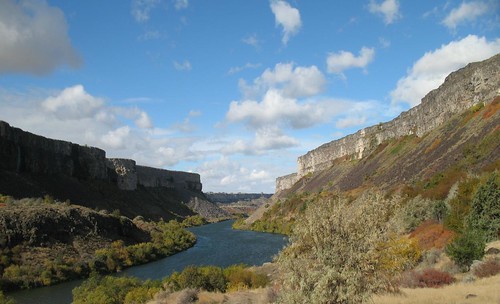
The Pacific Northwest is known for its picturesque lakes, cascading streams and dramatic coastlines. The many rivers of the Pacific Northwest—the Yakima, the Snake, Snohomish, Willamette, Klamath, Boise, and others—are part of the cultural, economic and environmental foundation of the region. These waters are meaningful for local Native American Tribes, agricultural production, industries who rely on water resources, and local communities and tourists from around the world that enjoy fishing and other forms of recreation along Northwestern rivers and streams.
It’s no surprise that the states of Washington, Oregon and Idaho are interested in protecting their rivers to preserve these values, and the wildlife and ecosystems they’re a part of. More surprising, however, is the innovative way the states are collaborating to do it.
Water quality trading allows point sources that directly discharge to water, like wastewater treatment plants, to invest in “green” infrastructure by restoring the watershed’s natural capacity to filter water. For example, instead of installing expensive technology to reduce phosphorous discharges, the treatment plant could pay farmers upstream to plant trees along their fields to reduce the same amount (or more) of phosphorous from reaching the rivers. Water quality trading may create cost savings for regulated sources, supports conservation on working agricultural lands, and generate environmental solutions that have benefits beyond just water quality—including carbon sequestration and wildlife habitat.
In 2012, the Willamette Partnership was awarded a $1.5 million Conservation Innovation Grant (CIG) from USDA’s Natural Resources Conservation Service (NRCS) to help facilitate a conversation with Washington, Oregon, and Idaho to develop multi-state recommendations on water quality trading. The CIG allowed the Willamette Partnership and The Freshwater Trust to convene Washington, Oregon and Idaho state department of environment staff and U.S. Environmental Protection Agency Region 10 to identify common principles and practices to shape consistent approaches to trading in the region, with a focus on how trading could help regulated sources of pollutant discharges meet their discharge limits while providing additional environmental benefits.
The effort resulted in a set of joint recommendations for each state to consider as they develop and further their water quality trading programs, with a goal of keeping those programs consistent with the Clean Water Act and state and local water quality laws. The recommendations address the importance of sound science, avoiding local water quality problems, providing evidence that resulting environmental benefits are real, and ensuring that these benefits are echoed in local communities.
Today, the three states have committed to testing these principles and an associated set of recommendations through 2015. Following this piloting phase, the states and EPA will discuss their experiences, and if necessary, refine their joint recommendations. The states, in consultation with partners, will decide how or whether to incorporate the joint recommendations into formal policy or guidance on trading.
Bobby Cochran, Executive Director for Willamette Partnership noted, “This is a really exciting time for the Northwest. Washington, Oregon, and Idaho thought deeply about how the joint recommendations can help provide some clarity on trading, promote good stewardship, and support clean water for communities and fish.”
The joint recommendations put forth by Washington, Oregon and Idaho can serve as an example for the rest of the country on how to establish well thought out trading programs that are built for success. Through CIG projects and other joint efforts, including the 2013 EPA – USDA Partnership Agreement to support water quality trading, we can do a better job of protecting water resources we rely on—while benefitting local communities, producers, and the environment.
